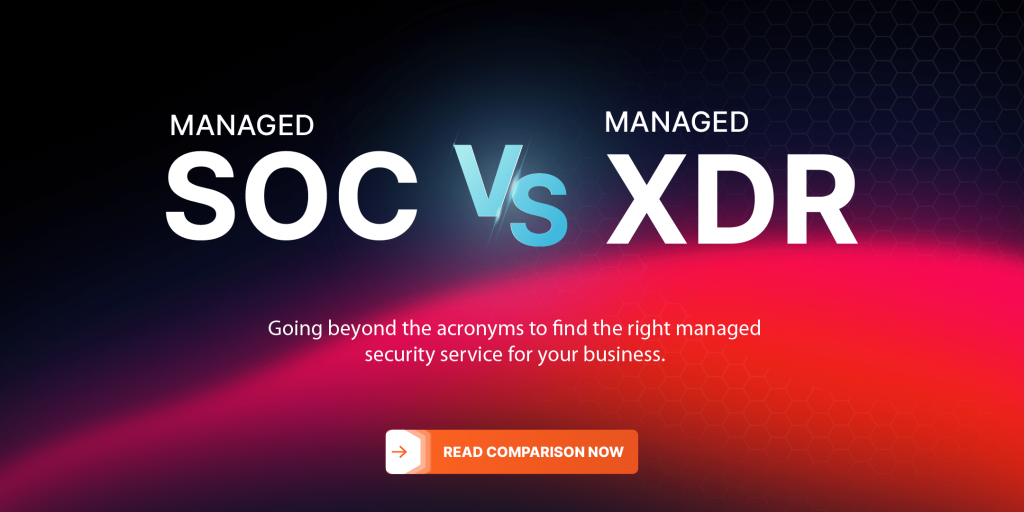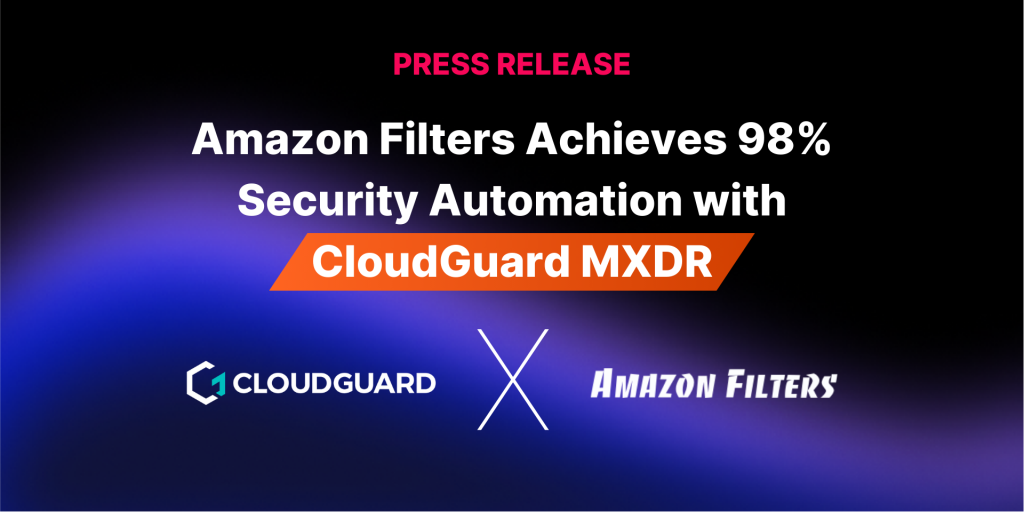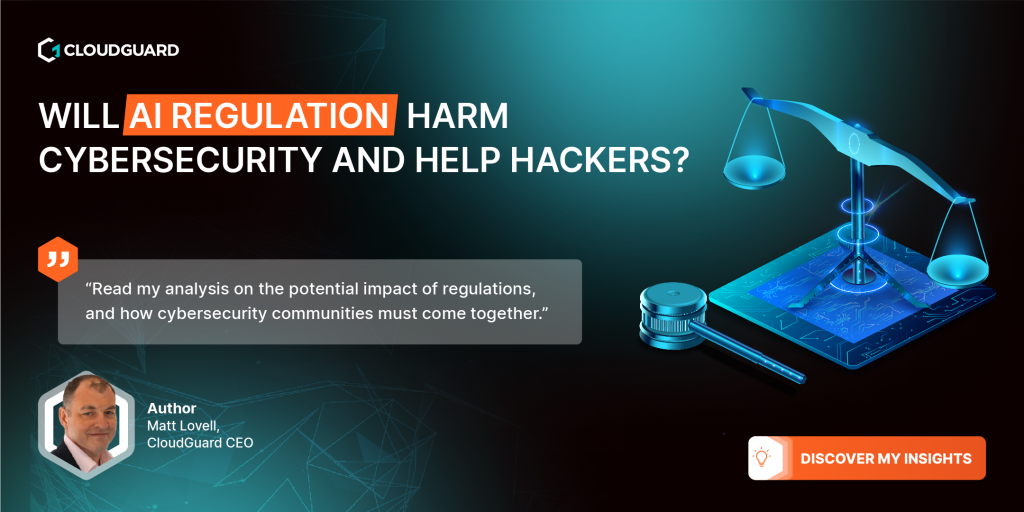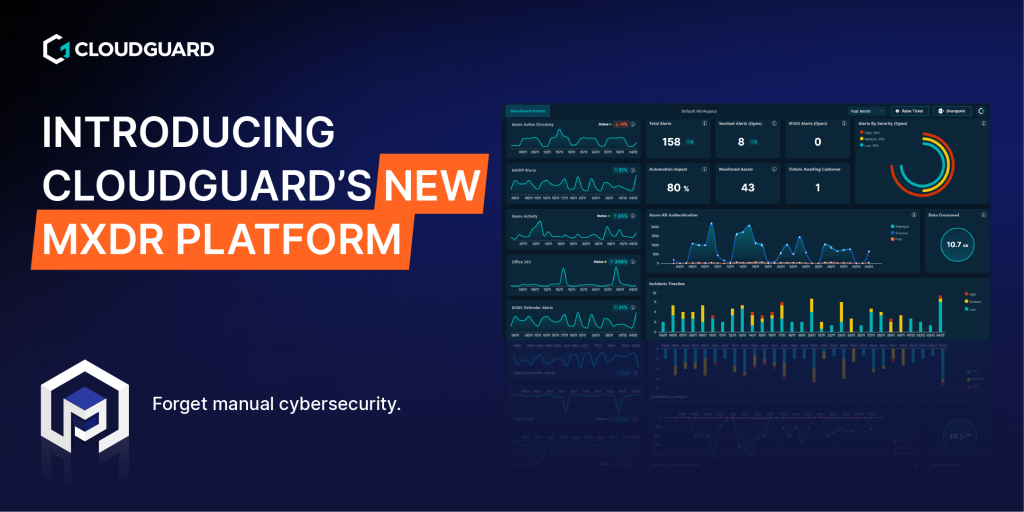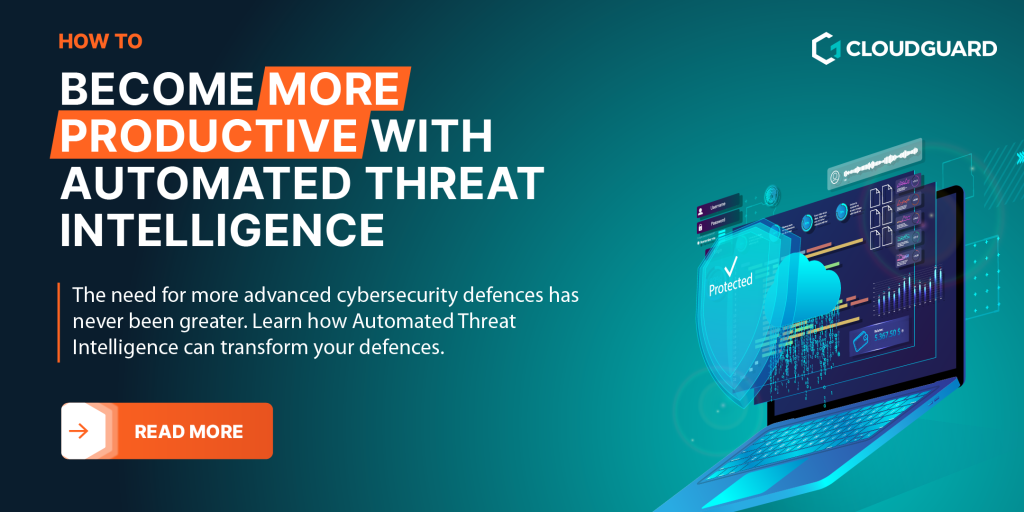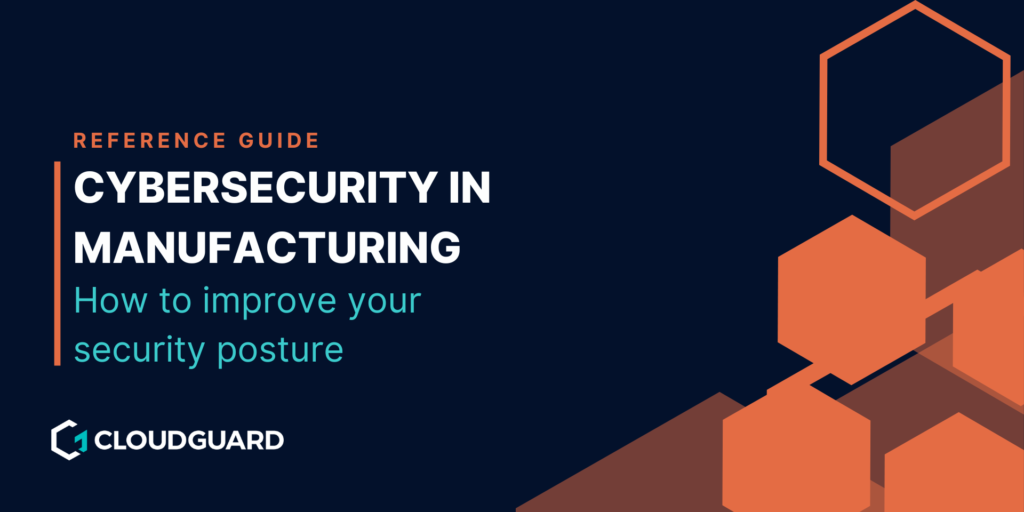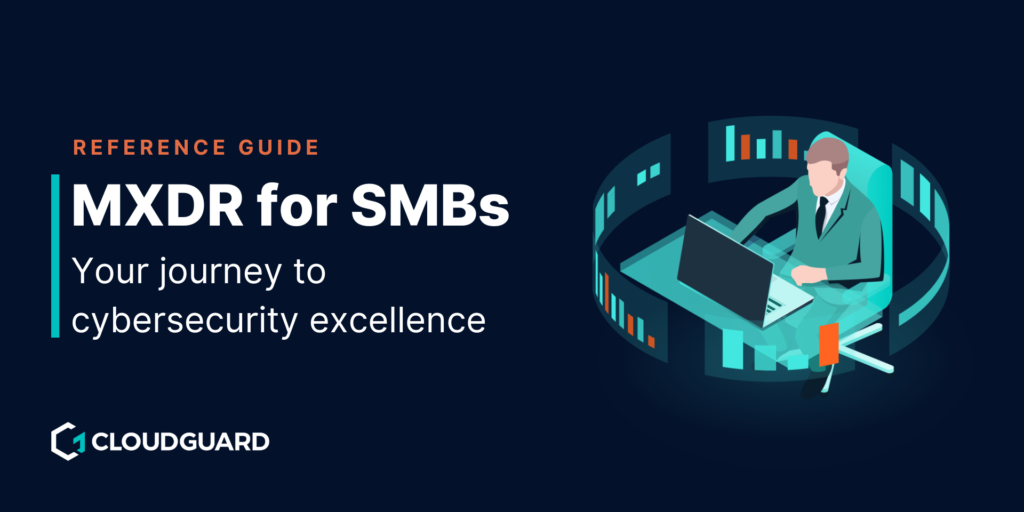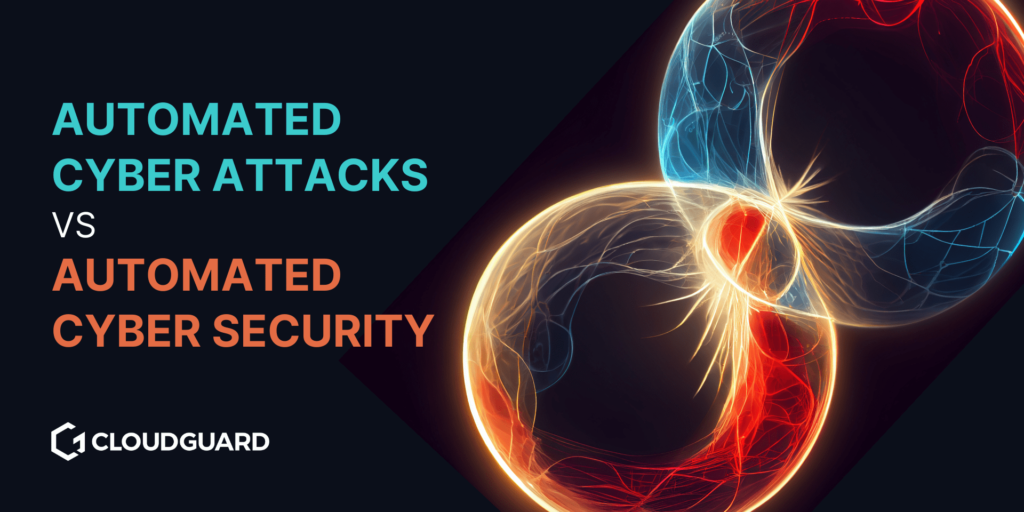MXDR: Managed Extended Detection and Response
Discover the potential of Managed Extended Detection and Response! Learn about the ultimate cybersecurity solution that combines cutting-edge tech and human expertise for unmatched protection.
From what it is to how it works, we’ll explore its advantages over other services and guide you in selecting the right MXDR provider. Get ready for next-level protection.
Introduction
What is MXDR?

This might be stating the obvious but cybersecurity has become a top concern for businesses of all sizes. Small and medium-sized businesses (SMBs) are no exception, as they often face resource constraints while needing to protect their sensitive data from an array of cyber threats.
This is where Managed eXtended Detection and Response (MXDR) comes into play. In this comprehensive guide, we will delve into the concept of MXDR, its significance for SMBs, and how it can improve your organisation’s cybersecurity posture
Understanding MXDR
What is MXDR? MXDR stands for Managed eXtended Detection and Response.
It’s a managed cybersecurity solution that unifies your organisation’s security data, analyses it with artificial intelligence, automatically raises the alarm, and remediates if anything suspicious is detected.
Managed eXtended Detection and Response combines the capabilities of two essential services: Managed Detection and Response (MDR) and eXtended Detection and Response (XDR).
This mix creates a 360 approach to cybersecurity that offers enhanced threat detection, response, and remediation.
Managed Detection and Response (MDR): MDR involves the continuous monitoring of a business’ IT environment using advanced tools and techniques. It focuses on identifying potential security threats and responding to them in real-time. MDR providers use technologies like threat intelligence, behavioural analysis, and machine learning algorithms to detect anomalies that might indicate a cyberattack.
eXtended Detection and Response (XDR): XDR takes a broader view of security by analysing data across multiple vectors, such as endpoints, networks, and cloud environments. It correlates information from various sources to provide a more comprehensive picture of ongoing threats. This approach allows for better threat hunting, investigation, and incident response.
The significance of MXDR for SMBs
Comprehensive Protection: MXDR offers SMBs a comprehensive and proactive cybersecurity solution that goes beyond traditional antivirus software. By monitoring diverse attack surfaces and analysing the overall threat landscape, MXDR provides a higher level of protection against emerging and sophisticated threats.
Resource Optimisation: SMBs often have limited IT resources and expertise. MXDR alleviates the burden of round-the-clock monitoring and incident response by leveraging the capabilities of third-party security experts. This allows SMBs to focus on their core business activities while maintaining a robust cybersecurity posture.
Real-time Threat Detection: MXDR’s real-time monitoring and threat detection capabilities enable rapid identification of potential security breaches. This proactive approach minimises the time attackers have to exploit vulnerabilities, reducing the potential damage and associated costs.
Faster Incident Response: In the unfortunate event of a cybersecurity incident, MXDR streamlines the incident response process. With detailed insights into the attack chain and compromised assets, organisations can take swift and targeted actions to contain and mitigate the damage.
Scalability: As SMBs grow and evolve, their IT infrastructure becomes more complex. MXDR is scalable and can adapt to changes in your organisation’s size and technology landscape. This flexibility ensures that cybersecurity remains effective even as the business expands.
Regulatory Compliance: Many industries have specific cybersecurity regulations that SMBs must adhere to. MXDR helps organisations meet these compliance requirements by maintaining a high level of security and providing the necessary documentation to demonstrate due diligence.
Key features of MXDR
Cross-platform Visibility: MXDR provides a centralised view of security data from various sources, including endpoints, networks, servers, and cloud environments. This visibility allows for the early detection of threats that may traverse multiple vectors.
Advanced Threat Detection: Through the integration of threat intelligence and behavioural analysis, MXDR can identify abnormal patterns and indicators of compromise that traditional security tools might miss.
Automated Response: MXDR includes automated response capabilities that can execute predefined actions based on the severity and type of threat. This can include isolating compromised devices, blocking malicious network traffic, and initiating incident response procedures.
Threat Hunting: MXDR empowers security teams to actively search for threats within the organization’s infrastructure. By proactively seeking out hidden threats and vulnerabilities, MXDR enhances the organization’s security posture.
Incident Investigation: In the aftermath of a security incident, MXDR provides detailed forensic data that assists in the investigation. This includes the timeline of events, affected assets, and the tactics used by attackers.
Implementing MXDR for your SMB
Assessment: Begin by assessing your organisation’s current cybersecurity posture, identifying vulnerabilities, and understanding your threat landscape. This evaluation will help determine the specific needs and goals for implementing MXDR.
Vendor Selection: Choose a reputable MXDR service provider that aligns with your organisation’s requirements. Look for a provider with a track record of effective threat detection, incident response, and customer support.
Deployment: Work closely with the selected provider to deploy the MXDR solution across your IT infrastructure. Ensure that the solution integrates seamlessly with your existing security tools and workflows.
Configuration: Configure the MXDR solution according to your organisation’s unique security policies and requirements. Define rules for automated responses and establish escalation procedures.
Training: Provide training to your internal IT and security teams to ensure they are familiar with the MXDR solution’s interface, features, and functionalities. This will enable them to effectively monitor and respond to security incidents.
Ongoing Monitoring and Optimization: Regularly monitor the performance of the MXDR solution and fine-tune its configurations based on evolving threats and organizational changes.
SMBs cannot afford to overlook the importance of robust cybersecurity defences. Managed eXtended Detection and Response emerges as a comprehensive solution that offers SMBs advanced threat detection, real-time monitoring, and automated incident response capabilities.
By combining the strengths of Managed Detection and Response (MDR) and eXtended Detection and Response (XDR), MXDR empowers SMBs to navigate the complex cybersecurity landscape with confidence. Embracing MXDR not only enhances security but also allows SMBs to focus on their core business operations, knowing that their critical data and assets are well protected.
Under the hood
How does MXDR work?
Let’s delve into the intricate workings of MXDR, from data ingestion to threat remediation, and explore the value it brings to end customers.
Data ingestion: A comprehensive view across environments
At the heart of MXDR lies a powerful Security Information and Event Management (SIEM) solution.This a centralised platform that aggregates and analyses data from diverse sources. MXDR ingests data from various areas, including cloud environments, on-premises infrastructure, applications, network traffic, endpoints, and more. This data ingestion ensures that no potential threat goes unnoticed, regardless of its point of origin.
The data sources covered by MXDR include but are not limited to:
- Cloud Environments: MXDR monitors cloud platforms, such as AWS, Azure, Google Cloud, and others. It monitors the activities of virtual machines, containers, and serverless functions to detect unauthorised access, configuration errors, and suspicious behaviours.
- On-Premises Infrastructure: From servers and databases to routers and switches, MXDR keeps a watchful eye on your organisation’s internal network. It identifies unusual traffic patterns, potential vulnerabilities, and insider threats.
- Applications: MXDR analyses application logs and user behaviour to identify abnormal activities that might indicate a breach or compromise. It assesses login attempts, data access, and interactions with critical applications.
- Network Traffic: By monitoring network traffic, MXDR detects patterns indicative of malicious activities, such as Distributed Denial of Service (DDoS) attacks, lateral movement, and command-and-control communications.
- Endpoints: MXDR ensures that every endpoint, including workstations, laptops, and mobile devices, is monitored for signs of malware, unauthorised access, and other security threats.
- User and Entity Behaviour: MXDR observes user behaviour and interactions with critical assets. It can identify unusual login times, data access from unusual locations, and other activities that deviate from the norm.
- IoT Devices: As the Internet of Things (IoT) becomes more prevalent, MXDR also extends its coverage to IoT devices. This ensures that these endpoints are not exploited as potential entry points.
- Cloud Applications: Beyond cloud infrastructure, MXDR examines interactions with cloud-based applications like Office 365 and G Suite to identify unauthorised access and data exfiltration.
- Third-Party Integrations: MXDR can integrate with third-party security tools, enriching its analysis with data from intrusion detection systems, firewalls, and more.
MXDR’s comprehensive approach to data ingestion creates a multi-dimensional view of your organisation’s security posture, leaving no stone unturned in the pursuit of identifying and mitigating potential threats.
It goes beyond traditional security measures by ingesting data from a wide array of sources, ensuring that no potential threat goes unnoticed. This comprehensive data collection and analysis pave the way for AI-powered threat detection, rapid incident response, and an overall bolstered cybersecurity posture.
AI-powered threat analysis
Once the data is ingested into the SIEM solution, artificial intelligence (AI) takes centre stage. Advanced machine learning algorithms analyse the data, seeking anomalies, patterns, and indicators of compromise. The AI-powered analysis goes beyond the capabilities of traditional rule-based systems, as it can recognise subtle deviations that might otherwise go unnoticed.
AI-driven threat analysis includes:
- Behavioural Analysis: AI algorithms establish a baseline of normal behaviour for your organisation’s environment. Deviations from this baseline are flagged as potential threats.
- Threat Intelligence Integration: MXDR integrates with threat intelligence feeds, enabling it to identify known malware signatures, malicious IP addresses, and other indicators of known threats.
- Contextual Analysis: AI contextualises data by correlating information from multiple sources. This complete view provides a more accurate understanding of potential threats.
Alert generation: From analysis to actionable insights
As the AI algorithms analyse the data, they generate alerts when suspicious activities or potential threats are detected. These alerts are not merely raw data points; they are enriched with contextual information and presented in a clear and prioritised manner. Each alert includes details about the threat, affected assets, potential impact, and recommended actions.
Automation in alert triage and threat mitigation
When it comes to an attack, time is of the essence. MXDR uses cybersecurity automation to streamline the process of alert triage and threat mitigation. When an alert is generated, automation plays a crucial role in:
- Initial Triage: Automated workflows assess the severity of alerts and compare them against established response playbooks. This helps prioritise alerts that require immediate attention.
- Automated Responses: For known threats or predefined scenarios, MXDR can execute automated responses. These responses might include isolating compromised devices, blocking malicious IP addresses, or quarantining suspicious files.
- Enriched Threat Intelligence: MXDR integrates with threat intelligence feeds to enrich alerts with additional context. This enables faster decision-making by providing insights into the nature of the threat and the tactics employed by attackers.
SOC teams and remediation
While automation accelerates response times, the human element remains pivotal in the MXDR process. Security Operations Centre (SOC) teams play a critical role in threat remediation. Equipped with enriched threat intelligence and actionable insights, SOC analysts can swiftly assess alerts, validate threats, and orchestrate a targeted response.
The benefits of SOC teams in the context of MXDR include:
- Faster Decision-Making: Enriched alerts provide SOC teams with a comprehensive understanding of the threat landscape. This accelerates the decision-making process and ensures that responses are accurate and effective.
- Incident Investigation: In the event of a breach, SOC teams dive deep into the incident, analysing the attack chain and identifying potential points of entry. This investigation helps prevent similar incidents in the future.
- Customised Remediation: SOC analysts tailor responses to your organisation’s unique environment and security policies. This personalised approach minimises disruption while effectively neutralising threats.
Security with confidence
For end customers like yourself, MXDR translates into a transformative cybersecurity solution that offers:
- Comprehensive Protection: MXDR’s broad coverage and AI-driven analysis provide a strong defence against a wide range of cyber threats.
- Proactive Threat Detection: By detecting threats in real-time and leveraging automation, MXDR ensures that potential breaches are identified and addressed promptly.
- Efficient Incident Response: The collaboration between automation and human expertise enables rapid and accurate incident response, minimising the impact of cyberattacks.
- Enhanced Visibility: MXDR offers a 360 view of your organisation’s security posture, empowering decision-makers with actionable insights.
- Regulatory Compliance: The ability to monitor and document security incidents aids in meeting industry-specific compliance requirements.
As a cybersecurity solution, MXDR is all about innovation and efficiency. From data ingestion to threat analysis, alert generation, and response orchestration, MXDR combines cutting-edge technology with human expertise to safeguard organisations against evolving cyber threats.
For end customers, MXDR means more than just protection; it means operating in a digital world with confidence and peace of mind.
Time to power up
The 7 benefits of MXDR and considerations you should know
Like any technology, MXDR comes with its share of benefits and considerations. Here, we’ll explore the advantages MXDR offers to SMBs, as well as potential disadvantages and factors that should be carefully considered.
7 benefits of MXDR for SMBs
- Comprehensive Protection: MXDR offers SMBs a rounded cybersecurity solution that covers a wide range of attack vectors. From endpoints and network traffic to cloud environments and applications, MXDR’s data ingestion and analysis leave no potential threat unnoticed. This all-encompassing approach ensures that SMBs have a strong line of defence against both known and emerging threats.
- Real-time Threat Detection: MXDR’s continuous monitoring and AI-driven analysis enable real-time threat detection. This proactive approach minimises the time attackers have to exploit vulnerabilities, reducing the potential damage and associated costs of a successful breach.
- Automated Incident Response: By automating response actions based on predefined playbooks, MXDR enables SMBs to respond swiftly to threats without manual intervention. This not only reduces response times but also minimises the risk of human error during high-stress incidents.
- Resource Optimisation: SMBs often have limited IT resources and expertise. MXDR’s managed service model allows SMBs to leverage the capabilities of external cybersecurity experts. This ensures that their cybersecurity defences remain robust without overburdening their internal teams.
- Threat Intelligence Integration: MXDR integrates with threat intelligence feeds, enhancing its ability to identify known malware signatures, malicious IP addresses, and other indicators of compromise. This integration keeps SMBs updated on the latest threat landscape.
- Scalability and Flexibility: As SMBs grow and evolve, their cybersecurity needs change. MXDR is scalable and can adapt to changes in your organisation’s size and technology landscape, ensuring that security remains effective as the business expands.
- Reduced Dwell Time: MXDR’s swift threat detection and automated response capabilities result in a reduced “dwell time,” the duration a threat remains undetected within an environment. This decreases the potential impact of a successful cyberattack.
7 MXDR considerations for SMBs
- Costs: While MXDR provides invaluable benefits, the associated costs can be a consideration for SMBs with limited budgets. It’s important to assess the costs of implementing and maintaining an MXDR solution compared to the potential losses from a cyber attack.
- Integration Complexity: Integrating MXDR with existing security tools and workflows might require technical expertise and careful planning. Ensuring seamless integration is crucial to avoid disruptions and gaps in coverage.
- False Positives: Like any cybersecurity solution, MXDR can generate false positive alerts. SMBs should establish processes for validating and prioritizing alerts to prevent unnecessary disruptions and investigation efforts.
- Dependency on Service Provider: SMBs opting for a managed MXDR service rely on the expertise and reliability of the service provider. It’s essential to choose a reputable provider with a track record of effective threat detection and response.
- Skill Set: SMBs that choose to manage MXDR in-house will require personnel with the expertise to configure, monitor, and respond effectively to the solution’s alerts. Acquiring and retaining skilled cybersecurity professionals can be a challenge.
- Regulatory Compliance: While MXDR can enhance compliance efforts, SMBs must ensure that the solution aligns with their specific industry regulations and requirements. This might involve customiSation and additional documentation.
- Risk Tolerance: SMBs need to assess their risk tolerance and determine the level of security appropriate for their business. MXDR offers advanced protection, but it’s essential to balance security measures with operational needs.
What this means for your business
Managed eXtended Detection and Response (MXDR) holds immense promise for SMBs seeking robust cybersecurity defences against a backdrop of evolving threats. Its comprehensive protection, real-time threat detection, and automated incident response capabilities are key strengths that can empower SMBs to navigate the complex cybersecurity landscape.
However, SMBs should also carefully consider factors such as costs, integration complexity, and dependency on service providers before implementing MXDR. By weighing the benefits against the considerations, SMBs can make informed decisions that align with their unique needs and risk profiles, ultimately enhancing their cybersecurity posture in a rapidly changing digital landscape.
Let’s get ready to rumble
MXDR vs traditional cybersecurity solutions
Get ready to witness the most thrilling showdown in the world of cybersecurity! In one corner, we have MXDR, the next-level security solution armed with advanced technologies and expert human support.
And in the other corner, we have the fierce competitors: SIEM, SOC, and EDR, to name a few. Each solution bringing their own unique arsenal to the battlefield. It’s the ultimate face-off that will separate the champions from the contenders. Get your ringside seats and let the comparisons begin!
Jump to the MXDR battle that interests you:
- MXDR vs SIEM
SIEM (Security Information and Event Management) is defined as a security solution that helps organisations detect threats by collecting and analysing data from various sources. It offers insights into security events, generates alerts, and facilitates investigation and reporting. However, SIEM requires significant expertise and resources to manage effectively.In contrast, MXDR combines AI, automated analysis, and human expertise to rapidly detect, investigate, and respond to security incidents. MXDR actively monitors networks in real-time and offers proactive threat detection, incident response, and expert guidance. Unlike SIEM, MXDR is a managed service, relieving businesses of the complexities of system configuration and maintenance. - MXDR vs SOAR
SOAR (Security Orchestration, Automation, and Response) is a technology platform that automates security operations, streamlining workflows and improving operational efficiency. However, SOAR is not a complete solution for eliminating all threats.MXDR, on the other hand, leverages AI, automation, and human expertise to detect, investigate, and respond to security incidents. It actively monitors networks and offers proactive threat detection, incident response, and expert guidance. MXDR’s managed service approach provides continuous monitoring and comprehensive incident response, offering a more comprehensive approach to cybersecurity. - MXDR vs SOC
A SOC (Security Operations Centre) is a team or facility responsible for monitoring and responding to security incidents. It relies on various security tools, such as SIEM, to analyse data and coordinate incident response efforts.MXDR goes beyond traditional SOC capabilities by actively detecting and responding to potential threats. It uses advanced technology and automation for real-time data collection and analysis, overcoming challenges posed by the cybersecurity skills shortage. MXDR’s managed service approach offers continuous monitoring, automated incident response, and expert guidance. - MXDR vs EDR
EDR (Endpoint Detection and Response) focuses on monitoring endpoint devices to detect and respond to threats. However, EDR is limited in its reactive approach, as it relies on behavioural analysis after threats have executed on endpoints.MXDR provides proactive threat detection across endpoints, network traffic, servers, cloud environments, and other components. It uses AI and automated monitoring to identify patterns and anomalies, offering a broader scope of coverage. MXDR’s managed service approach ensures continuous monitoring, real-time threat detection, incident response, and expert support. - MXDR vs MDR
MDR (Managed Detection and Response) focuses on detecting and responding to known threats within an organisation. MXDR extends capabilities beyond MDR by proactively identifying new and emerging threats through the integration of threat intelligence feeds.MXDR employs AI, automation, and continuous monitoring to analyse vast amounts of data, offering a broader scope of coverage and expert support. MXDR’s comprehensive approach strengthens overall security posture. - MXDR vs XDR
XDR (Extended Detection and Response) is a security framework that expands capabilities beyond traditional EDR solutions. MXDR incorporates XDR principles and offers a managed cybersecurity service that includes advanced AI, automation, and expert support.MXDR relieves businesses from the need to build in-house teams, enabling professionals to focus on analysis and problem-solving. MXDR’s managed service approach provides holistic cybersecurity and expert guidance.
Once you’ve explored the features and capabilities of Managed Extended Detection and Response vs traditional solutions, it’s time for you to make the final call. Assess your business’ specific needs, consider the level of automation, expertise, and integration required, and weigh the strengths and weaknesses of each solution.
Remember, there is no one-size-fits-all answer in this arena. Choose the solution that aligns best with your unique requirements, and equip your business with the power to conquer the ever-evolving cyber threats.
Investing in cybersecurity
How much does MXDR cost?
SMBs need robust threat detection and response capabilities. However, the question of cost often looms large. Below, we’ll delve into the various components that contribute to the costs of MXDR and provide insights into how SMBs can assess and manage these costs effectively.
The 7 components of calculating MXDR costs
MXDR costs encompass a range of factors that collectively contribute to the overall investment. These factors include:
- Service subscription: The core expense of MXDR involves the service subscription fee, which covers the use of the MXDR solution, access to threat intelligence feeds, real-time monitoring, and incident response capabilities.
- Data ingestion costs: SMBs using an MXDR solution will need to consider the costs associated with ingesting data into their chosen SIEM solution. The volume and variety of data sources being monitored can impact these costs.
- Licensing and usage: Depending on the MXDR provider, licencing and usage fees may be calculated based on factors such as the number of users, endpoints, devices, or cloud instances being monitored.
- Threat intelligence integration: Some MXDR solutions integrate third-party threat intelligence feeds, which may come with additional costs. These feeds enhance threat detection by providing up-to-date information on emerging threats.
- Customisation and implementation: Tailoring the MXDR solution to your organisation’s specific needs may involve additional customisation and implementation costs. This can include defining response playbooks, alert thresholds, and incident response procedures.
- Support and maintenance: MXDR providers often offer customer support and ongoing maintenance as part of the package. The level of support, availability, and responsiveness can impact costs.
- Training: Training your internal IT and security teams to effectively use the MXDR solution can be an additional cost to consider.
How costs are typically calculated
MXDR costs can vary widely based on factors unique to each organisation. Here are some common methods used to calculate MXDR costs:
- Tiered pricing: MXDR providers often offer tiered pricing models that align with the organisation’s size, complexity, and cybersecurity needs. Organisations can choose a tier that best matches their requirements.
- Per-device/per-user pricing: Some MXDR solutions charge based on the number of devices (endpoints) or users being monitored. This pricing model can help SMBs pay for the resources they use.
- Data volume: The volume of data ingested into the SIEM solution can impact costs. Providers might charge based on the amount of data processed or the number of events analysed.
- Usage metrics: Costs might be calculated based on the amount of time the MXDR solution is actively monitoring and analysing data. This can provide flexibility for organisations with fluctuating needs.
5 cost considerations for SMBs
- Budget: SMBs should assess their cybersecurity budget and consider the overall value that MXDR brings in relation to its costs. Balancing investment with the potential losses from a cyberattack is crucial.
- Scalability: Consider how scalable the MXDR solution is to accommodate the organisation’s growth. Ensure that scaling won’t lead to exponential cost increases.
- Data ingestion costs: In addition to the MXDR subscription, factor in data ingestion costs linked to your SIEM solution. Choose an SIEM with transparent pricing that aligns with your data volume.
- Cost-effective coverage: Focus on areas that matter the most to your organisation’s security. Prioritise coverage in critical environments and endpoints rather than overextending resources.
- Customisation: Understand the costs associated with customising the MXDR solution to your organization’s needs. Consider whether these costs align with the benefits gained.
Final thoughts on MXDR costs
Investing in MXDR is an investment in your organisation’s cybersecurity resilience. While costs are a significant consideration for SMBs, understanding the components that contribute to MXDR costs and how they are calculated helps you to make informed decisions.
By carefully evaluating your cybersecurity budget, scalability needs, data ingestion costs, and considering the overall value of enhanced protection, you can choose an MXDR solution that aligns with your organisation’s needs and resources. Remember, the cost of prevention is often much lower than the potential costs of a cyberattack. Next, we’ll consider calculating MXDR ROI.
Maximising investment
10 strategies for calculating ROI from MXDR
SMBs are dealing with the challenge of not only enhancing their security posture but also proving the return on investment (ROI) of their chosen cybersecurity solutions. Managed eXtended Detection and Response promises comprehensive threat detection and response capabilities. In this section, we’ll delve into 10 strategies that SMBs can use to effectively demonstrate the ROI of their MXDR investment.
1. Quantify reduction in incident response time
One of the most tangible benefits of MXDR is the reduction in incident response time. Calculate the average time it takes to identify and mitigate a threat before and after implementing MXDR. The reduction in response time directly translates to reduced potential damage and associated costs, such as business interruption and data loss.
2. Estimate cost savings from threat mitigation
Consider the potential financial impact of successful cyberattacks that could have been prevented or mitigated by MXDR. Estimate the potential costs associated with data breaches, ransomware attacks, and other threats that MXDR can effectively counter. Comparing these estimates against the costs of your MXDR investment provides a clear picture of potential cost savings.
3. Assess business continuity and downtime
Downtime due to cyberattacks or security incidents can have a significant impact on SMBs. Calculate the potential financial losses from business interruption and reduced productivity caused by downtime. MXDR’s rapid threat detection and response capabilities contribute to maintaining business continuity, minimising downtime, and preserving revenue streams.
4. Measure reduction in false positives
MXDR’s advanced threat detection capabilities often result in a reduction in false positives, allowing security teams to focus on genuine threats. Quantify the time and resources saved by minimising the investigation and response efforts associated with false alarms.
5. Evaluate regulatory compliance and fines
For industries with stringent compliance requirements, MXDR can aid in meeting regulatory standards. Calculate the potential costs of non-compliance fines and legal actions that could be avoided by maintaining a robust security posture through MXDR.
6. Consider reputation and customer trust
Cybersecurity incidents can erode customer trust and damage your company’s reputation. Quantify the potential impact of reputation damage in terms of customer churn, reduced sales, and negative public perception. MXDR’s ability to prevent and mitigate incidents can contribute to maintaining customer trust and brand reputation.
7. Assess savings on IT resources
MXDR’s managed service model can lead to savings on internal IT resources. Calculate the cost of hiring, training, and retaining skilled cybersecurity professionals versus the cost of outsourcing MXDR management. Additionally, consider the opportunity cost of IT teams being able to focus on strategic initiatives rather than constant threat monitoring.
8. Calculate incident frequency reduction
Analyse historical incident data to quantify the frequency of security incidents before and after implementing MXDR. The reduction in incident frequency is a direct measure of MXDR’s effectiveness in minimising your organisation’s exposure to cyber threats.
9. Factor in business growth and expansion
As SMBs grow and expand, the potential impact of a cyberattack becomes more significant. Factor in the potential revenue growth and expansion opportunities that can be safeguarded by MXDR. Demonstrating the role of MXDR in supporting business growth adds to its ROI.
10. Present a comprehensive ROI analysis
Compile the data and estimates from the above strategies into a comprehensive ROI analysis. This analysis should clearly illustrate the financial benefits of MXDR in terms of cost savings, risk mitigation, enhanced operational efficiency, and business continuity.
An example MXDR ROI calculation
The sample below details two scenarios, one looking at the cost of internal and external recruitment, the other looking at the costs of an outsourced solution.
Scenario 1:
| Role | Cost description | Cost estimate | Total |
| Internal recruitment – existing resource with training | External training and support tools | £5,000 | £50,000 |
| 75% of time allocated to Cyber support (165 days) 13.75 days per month | £45,000 | ||
| External recruitment – Skilled SIEM candidate | Resource oncost | £68,000 | £80,600 |
| Resource recruitment | £9,000 (15%) | ||
| On-call | £3,600 |
Scenario 2:
| Role | Cost description | Cost estimate |
| SIEM – SOC Managed Service monitoring | 24 x7 security monitoring | £19,844 |
| 24 x 7 detect and investigation | ||
| SIEM – SOC Managed Service response | 24 x 7 ThreatOps expertise | £16,669 |
| 24 x 7 Response to resolution | ||
| Average Annual Service Cost (150 users) | £36,513 | |
| Average cost per user per month (as of May 2023) | £20.28 | |
Even in a smaller organisation, it is evident that an external established service can be more cost-effective than external recruitment. The ROI modelling shows a 27% ROI improvement over internal recruitment and a 55% ROI improvement over external recruitment.
Summarising MXDR ROI
While cybersecurity investments can sometimes be challenging to quantify in terms of ROI, demonstrating the value of MXDR to SMBs is achievable through a thoughtful and strategic approach. By evaluating key factors such as incident response time reduction, cost savings from threat mitigation, business continuity improvements, and more, you can effectively showcase the positive impact MXDR has on their bottom line, security posture, and overall business operations.
Remember, investing in cybersecurity is not just an expense, but an essential step toward safeguarding your organisation’s future.
Finding a partner
12 steps to choosing an MXDR service partner
Selecting the right MXDR solution provider is a critical decision that requires careful consideration. Now we will explore the 12 steps that SMBs should take when choosing an MXDR solution provider to ensure optimal protection for their organisation.
Step 1: Define your requirements and goals
Before searching for an MXDR solution provider, you must clearly define your cybersecurity requirements and goals. This includes understanding your specific industry regulations, compliance needs, and the nature of your digital assets. Determine whether the primary focus is on threat detection, incident response, or a combination of both. Having a well-defined set of requirements will help you narrow down the list of potential providers.
Step 2: Research and shortlist providers
Conduct thorough research to identify MXDR solution providers that align with your requirements. Leverage online resources, industry reports, and recommendations from peers to compile a list of potential candidates. Consider factors such as reputation, industry experience, customer reviews, and the range of services offered.
Step 3: evaluate technological capabilities
Assess the technological capabilities of each MXDR solution provider on your shortlist. This includes understanding the range of data sources they can monitor, the depth of threat analysis they offer, and the integration capabilities with your existing security infrastructure. A comprehensive solution should cover cloud environments, endpoints, network traffic, applications, and more.
Step 4: Expertise and resources
Evaluate the expertise and resources that the MXDR solution provider brings to the table. Review their team’s qualifications, certifications, and experience in the field of cybersecurity. Additionally, consider whether the provider offers a managed service model, which can be beneficial for SMBs with limited internal resources.
Step 5: threat intelligence integration
An effective MXDR solution integrates threat intelligence feeds to enhance threat detection. Ask about the sources of threat intelligence the provider uses and how frequently they update their threat feeds. A provider with up-to-date threat intelligence ensures that your organisation is protected against the latest threats.
Step 6: Customisation and flexibility
Every SMB has unique cybersecurity needs. Ensure that the MXDR solution provider can tailor their services to align with your organisation’s specific requirements. This might involve customisation of data connectors, response playbooks, alert thresholds, and incident response procedures.
Step 7: Automated response capabilities
Automation plays a pivotal role in the efficiency of MXDR solutions. Learn about the provider’s automated response capabilities, including predefined actions taken in response to specific threats. This automation streamlines incident response and reduces response times.
Step 8: Integration and compatibility
MXDR solutions should seamlessly integrate with your existing security infrastructure, including firewalls, intrusion detection systems, and endpoint protection. Ask the provider about their integration process, compatibility with your tools, and potential disruptions during integration.
Step 9: Scalability and future growth
Consider your organisation’s growth trajectory when selecting an MXDR solution provider. Choose a provider that can scale their services to accommodate your evolving cybersecurity needs as your SMB expands.
Step 10: Compliance and reporting
For SMBs subject to industry regulations, compliance is crucial. Look into provider’s ability to help you meet compliance requirements. The provider should offer comprehensive reporting and documentation to demonstrate due diligence in security practices.
Step 11: Support and customer service
An MXDR solution provider’s support and customer service play a vital role in your overall experience. Evaluate their responsiveness, availability, and willingness to assist in case of emergencies. Look for a provider that offers timely support to address your concerns.
Step 12: Cost considerations
While cost should not be the sole deciding factor, it’s important to consider the pricing structure of each MXDR solution provider. Assess the overall value provided in relation to the cost and ensure that the investment aligns with your budget.
Now you’re ready to navigate the MXDR provider landscape
Choosing the right MXDR solution provider is a critical decision that can significantly impact your business’ cybersecurity posture. By following a systematic approach that includes defining requirements, researching providers, evaluating technological capabilities, and considering factors like expertise, threat intelligence integration, and support, you can make an informed decision.
Remember that a well-chosen MXDR solution provider not only enhances your organisation’s security but also empowers you to navigate the complex cybersecurity landscape with confidence.
Going it alone
Managed XDR vs DIY XDR
Choosing the right cybersecurity solution is crucial for protecting your business. When considering whether to opt for an MXDR (Managed Extended Detection and Response) service or an in-house XDR (Extended Detection and Response) approach, there are several things to weigh up. Here’s 5 benefits you’ll get from MXDR immediately without the complexity and time of doing it yourself.
- An MXDR service offers the expertise of a dedicated team of cybersecurity professionals. They possess extensive knowledge and experience in monitoring, detecting, and responding to threats across multiple security layers. Building and maintaining an in-house team with the same level of expertise can be costly and time-consuming.
- MXDR services provide round-the-clock monitoring and real-time threat intelligence, ensuring continuous protection for your organisation. It can be challenging to achieve this level of coverage with an in-house XDR solution without significant investment in personnel, tools, and infrastructure.
- MXDR services often have access to advanced technologies and tools that may be expensive for individual organisations to acquire and maintain. Leveraging tools such as artificial intelligence through an MXDR service allows you to benefit from the latest innovations without the upfront costs.
- MXDR services provide a predictable cost structure with subscription-based pricing, allowing you to budget effectively without unexpected expenses. In contrast, building an in-house XDR capability may involve higher upfront costs and ongoing investments.
- An MXDR service provides peace of mind by offloading the complexities and responsibilities of managing and responding to security incidents. It allows your internal teams to focus on core business activities and innovation, knowing that cybersecurity experts are actively monitoring and responding to threats on your behalf.
Considering these factors, opting for an MXDR service can provide comprehensive, expert-driven cybersecurity coverage while offering cost efficiencies, advanced technologies, continuous monitoring, and the ability to focus on your core business objectives. It enables your business to stay protected against the ever-evolving threat landscape while minimising the burden on internal resources.
Resources
Learn more about MXDR
Actionable resources for cyber security professionals. Stay ahead of the game with useful MXDR insights, guides and reports.

